Bedside Cabinet
Posted 10 November 2017
This is the introductory page for a paid video series. Want to watch more of this project? Select the best option below to get started.
Description
This bedside cabinet uses Paul’s mortise and tenon system to develop truly accurate and crisp looking joinery. The divider rail is a unique design feature Paul developed for this project and features equally unique adaptations to the mortise and tenons that unite the two side panel frames. Paul offers an alternative implementation of turnbuttons.
Notes
In oak, this cabinet would be more a plain and traditional looking bedside cabinet. In our case choosing ripple sycamore provides both texture and decoration, key ingredients for changing a cabinet for a more modern look.
Tool List
- Knife
- Square
- Combination gauge (or marking gauge and mortise gauge)
- *Cutting gauge
- Tape/Ruler (or both)
- Sliding bevel
- Dovetail template
- Chisel hammer
- Chisels (at least 5/16”, ½” and 1” or 8, 13 and 25mm)
- Hand router
- Smoothing plane (No 4)
- *Jack Plane (No 5) (optional but recommended for refining edges and if preparing your wood from rough-sawn stock)
- Spokeshave
- Plough Plane
- *Scrub Plane
- Mortice guide (made as part of project)
- Winding Sticks (for guaranteed accuracy to prevent twisted parts)
- Handsaw
- Tenon saw
- Dovetail saw
- No 80 Cabinet Scraper (if using figured hardwood)
- *Card scraper
- Hand drill or drill driver
- *Rasp
- File
- Screw driver
- Square Awl
* = optional
Joints List
Haunched mortise and tenons
Mortise and tenon
Housing dado

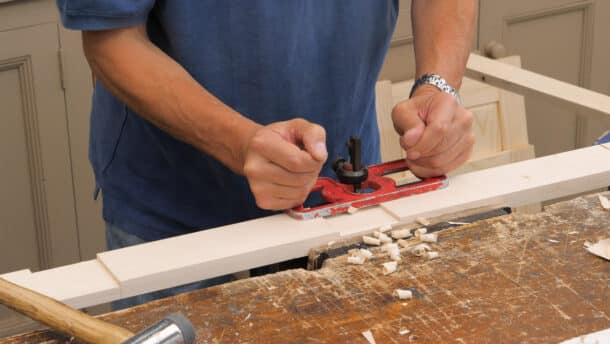
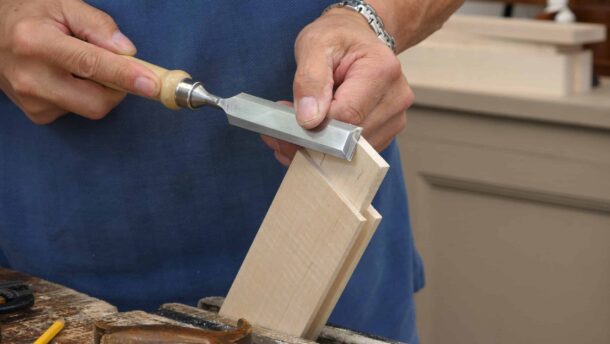
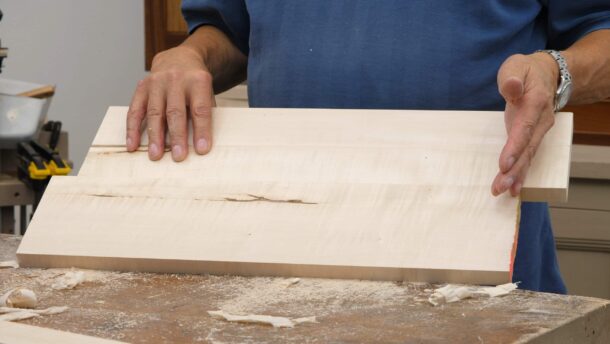
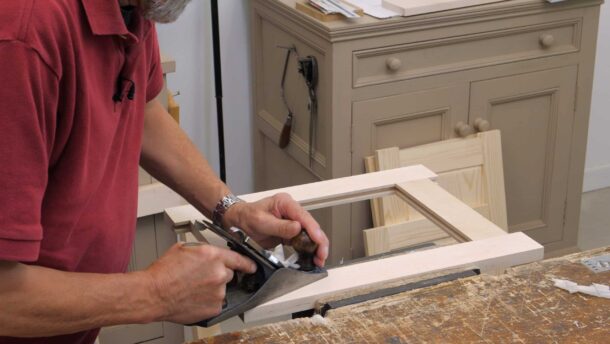
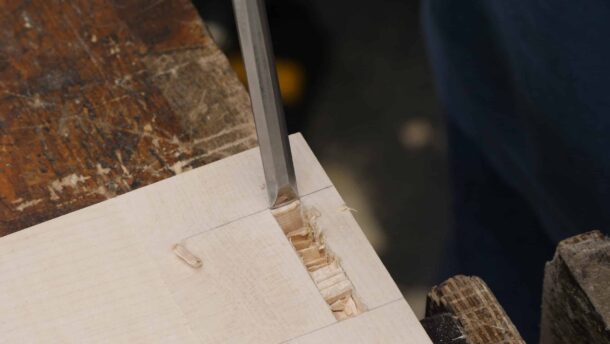
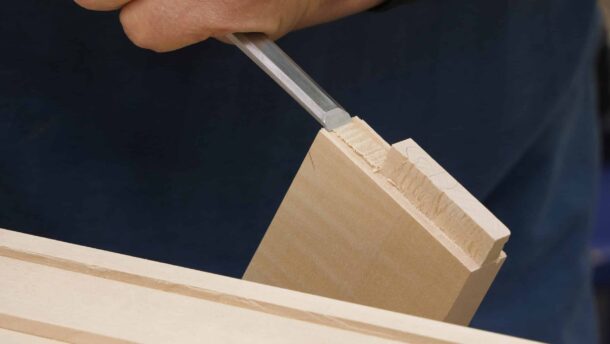
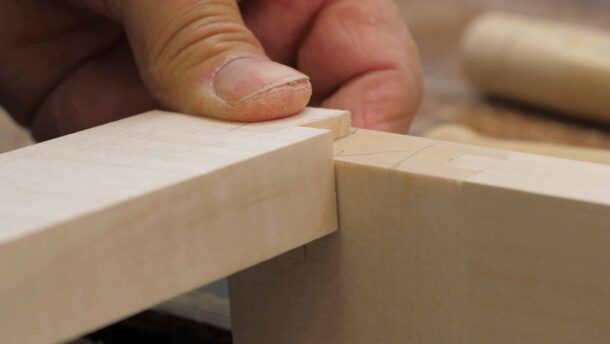
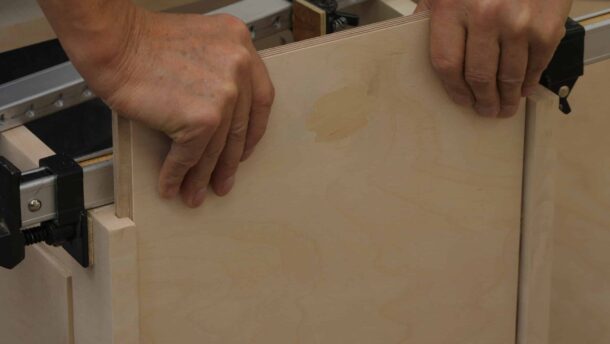
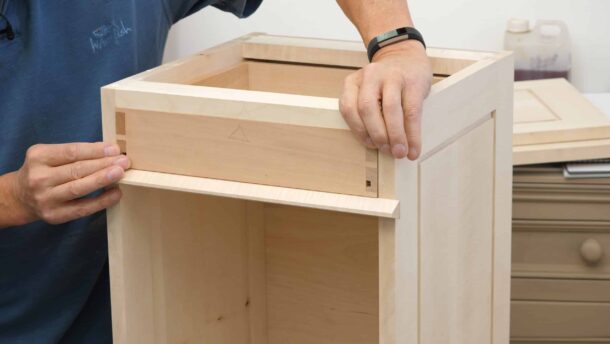
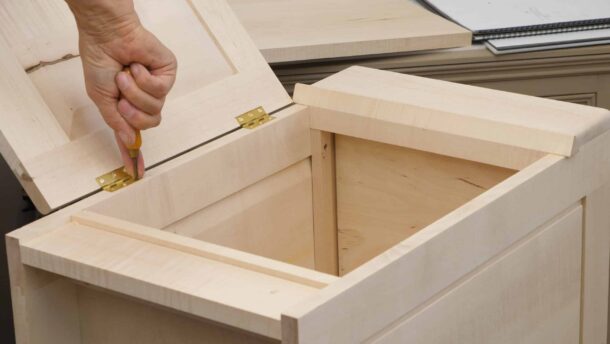
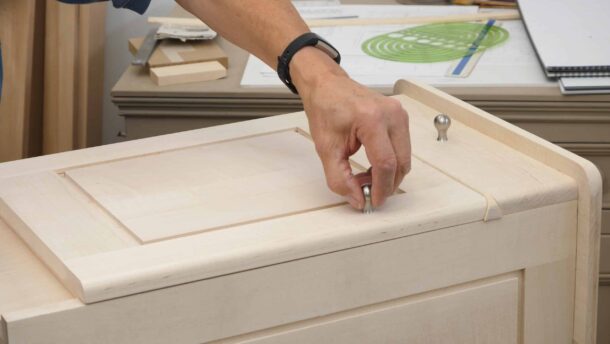
Love you Paul!
I can’t wait for Episode 1!!!
HI, great Project coming soon.
Ist there a drawing maybe a technical drawing an cut list available?
i meant “and cut list…..”
We are just finalising it at the moment. It will be up on this page soon!
Cut list and Drawing link is now up. (Between the video and the Description.)
Hi Mark, I do not see anything between the video and description. Will the link appear once I subscribe?
Yes, that’s right.
I am looking forward to getting started on this.
Really looking forward to this one. Can you tell us where you sourced the rippled sycamore from please?
Thanks,
Dario
Hello Dario,
Paul bought it from Surrey Timbers Ltd, but we’re not sure if they always have it in.
Thanks, will check them out.
MUCH improved lighting and audio. Looking forward to the new project and love you work.
Flipping heck I’m just finishing mine ! Can you please synchronise these with my wife’s wish list 🤓.
Heh heh, I had that with the chest of drawers!
Excuse me Mark,
But could there be something wrong with divider size at the cut list?
At least it should be 2 5/16″ (59mm) width instead of 2″
Thanks,
grover – I think the drawing on page 3 may be misleading, since the proportions of the shoulders on the ends of the horizontal ‘dividing’ rail don’t match what we see in the video (at 38 seconds). The inner shoulder on the video looks to be half or less than the gap between the tenon and the front 1″ protrusion. There is no dimension on the drawing for this (the 1/2″ adjacent relates to the tenon length not the shoulder width). If the inner shoulder were 3/16″ the width of the piece would sum to 2″ as per the cut list.
Sounds spot on Peter, thanks.
Very nice design. I think I will use concealed hinges to keep the lines unbroken
Paul, this project looks amazing!
We bought my son a set of pine IKEA bedside tables, but soon he and his younger brother will get handmade solid wood bedside tables from Daddy…
Thank you Paul!
Cheers from Canada,
Tony
Excellent.
Love these furniture projects!
Looks very interesting – I would also like a hint to the sourcing of the sycamore (UK). Thanks
Paul bought it from Surrey Timbers Ltd, but we’re not sure if they always have it in.
Hi
Great design!
Would it be possible for Paul do a short video on reference (witness) markings. I have searched all over the web, and only found only vague references and the odd image. People have heard of of reference (witness) markings and read about reference (witness) markings, but no actual reference (witness) markings information available.
I am hoping that Paul can help out with this.
Thanks
Paul already covered this pretty well in his stock preparation videos available on YouTube as a two part series.
Part 1 is here:
https://m.youtube.com/watch?v=Cl5Srx-Ru_U
Thanks for the help
It will be great to see Paul’s method for the drawer fitting can’t wait love it love it love it
Really looking forward to seeing this series.
Is this a suitable project for a relative beginner?
Hello Wayne, I wouldn’t recommend it to a relative beginner. You could do a much more simplified version, but that is difficult when starting out.
We put together a project progression here:
https://paulsellers.com/knowledge-base/project-progression/
If you worked through a few, such as the wallclock, a simple table, and some dovetail boxes, I think you’d be well prepared for a more complex project like this one.
Best, Phil
Phil, thank you so much! This project progression is just what I’ve been looking for. I have both of Paul’s books and even built the workbench based on the Artisan series book plans, but I’ve been looking for a little more direction on how to progressively build my skills. Thanks again!
Omg Phillip. I had no idea this project progression was on the site. So cool to see them lined up…. and to see what I have already done. I thought I knew the site. Apparently I need to explore more. 🙂
Hi Brian, that whole section is a fairly recent addition. Glad you find it useful.
This project progression is so helpful. Maybe it could be updated, or a skill level tag added? It really is useful.
Glad you enjoyed the project! We have no plans to update this project, however, with our Sellers Home series, when we reach the bedrooms Paul will be making bedside cabinets.
British Hardwoods at the Gt Northern Woodwork show 17/11/2017 had some beautiful ripple sycamore. I’m writing this on the 18th. Good to see lots of people buying top quality wood from them yesterday. They were very busy. Some wonderful burr elm, yew, and ash.
Couldn’t get a low cost router plane though. £80 or more whereas a few years ago less than £20. I blame Paul Sellers and all you people who rush out and push the prices up. Though as Paul says they are way cheaper than when he bought them new in his apprentice days. Costing them as a fraction of the then weekly wage: my try plane £3/10/0 against a wage of £10. And a Stanley combination plane was very serious money. But it still does a beautiful job after fifty years and will outlast me by a century or so. It is wonderful that the response to Paul can change market prices: read it as an index of how effective he is being.
Hi Paul,
Looks very interesting and I would like to try.
Have had difficulty reading the list of materials, in particular the imperial numbers in sixteenths.
Would it be possible to place the list of materials on another page in order to tell my computer to enlarge and print those details. The bottom right corner seems the last place my printer wants to access.
Became a problem when the first actions Paul showed, was to add three or four items into one long board and proceeding to most efficiently work on them.
Seems I must get the grey matter working first!!
The sycamore looks stunning but is rare to find in my world.
First things first; will try a first effort before ruining a rare wood. You may guess that I will be leaning heavily on the great video showing how.
Regards to all your team,
John
Hello John,
We have updated the drawing to include an extra page with the Cutting List on just by itself and larger (see above). I hope this helps!
With kind regards
Mark
Love the new format of your site! Class act as always!
Paul,
As always this is a great project. Looking at the front of the drawer box we see the groves on the two sides. Not a problem because they will be hidden when we apply the drawer front. What if that face is going to show. How do we create the grooves in the sides. I am making a small box for my granddaughter. I solved the problem by cutting stopped grooves with a chisel the same way we would cut a mortise. It’s a small box but it still seemed to be inefficient. Would a router plane with a fence have worked better? How would you approach this task.
Rob Riley
“Snug the Joiner”
If the drawer face is going to show, you could do half-blind dovetails. If you want the dovetail ends to be visible, you could use drawer slips to hold the bottom.
The most efficient option may be to cut through grooves and fill the grooves with plugs, as Paul did in the chisel box.